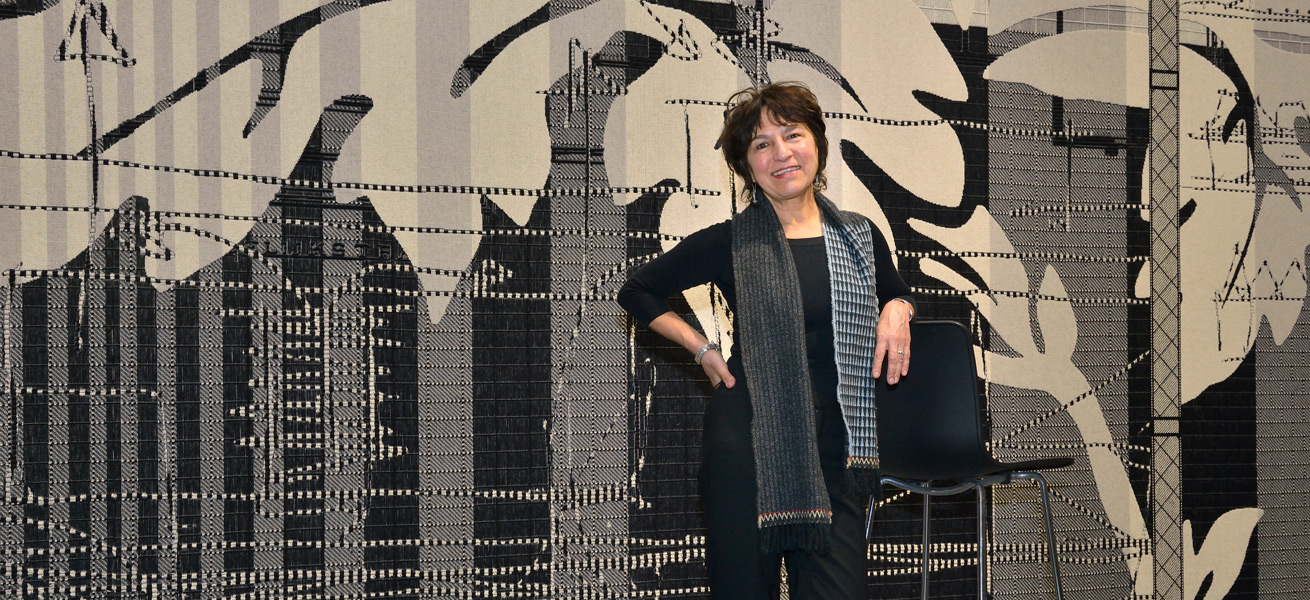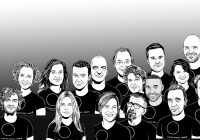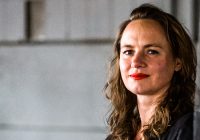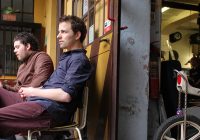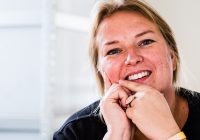Design Policy Adapting to Change
Shortly before the Milan Design Week 2015 we had a conversation with Madeleine van Lennep, director of the Association of Dutch Designers (BNO)
Much has changed in recent years in the Dutch design landscape. Not only is Dutch Design reinventing itself, but a lot has changed at the policy level as well. The government decided to implement a ‘top sector’ policy in order to promote the Netherlands as a land of innovation, where the creative industry ranks as the ninth top sector. At the same time, it cut expenditure on both the resources made available by the Ministry of Economic Affairs and on cultural subsidies. The sector institute Premsela was abolished, for which the sector got the merger organisation Het Nieuwe Instituut in return. The international promotion programme for design, fashion and architecture, DutchDFA, ended two years ago. The new foreign policy for the sector has still to be properly fleshed out. Things have also changed at the Association of Dutch Designers, BNO: after 27 years at the helm, Rob Huisman has been succeeded by Madeleine van Lennep. Who is she and what can we expect in the coming years? How is BNO responding to an evolving sector? David Heldt had the opportunity to ask a few questions.
David Heldt • Two years ago you took over from Rob Huisman, who had steered BNO for many years. What is your background? And what is your relationship with Dutch design?
Madeleine van Lennep • After studying at St. Joost Art Academy in Breda and completing a study in Museology, I quickly grew into several cultural-political positions. Before BNO came around I was deputy director of the Mondriaan Foundation, later the Mondriaan Fund. Before that I was an advisor on Dutch cultural politics, on behalf of the Dutch Council for Culture. I was director of Federatie Kunstuitleen. I also coordinated the production of art in the city of Utrecht. In all these previous jobs, Dutch design regularly featured on the side-line. I have always been well aware of design in my personal life – after all, it’s all around us and it has always intrigued me to see how information, products and services are shaped and in turn shape the world.
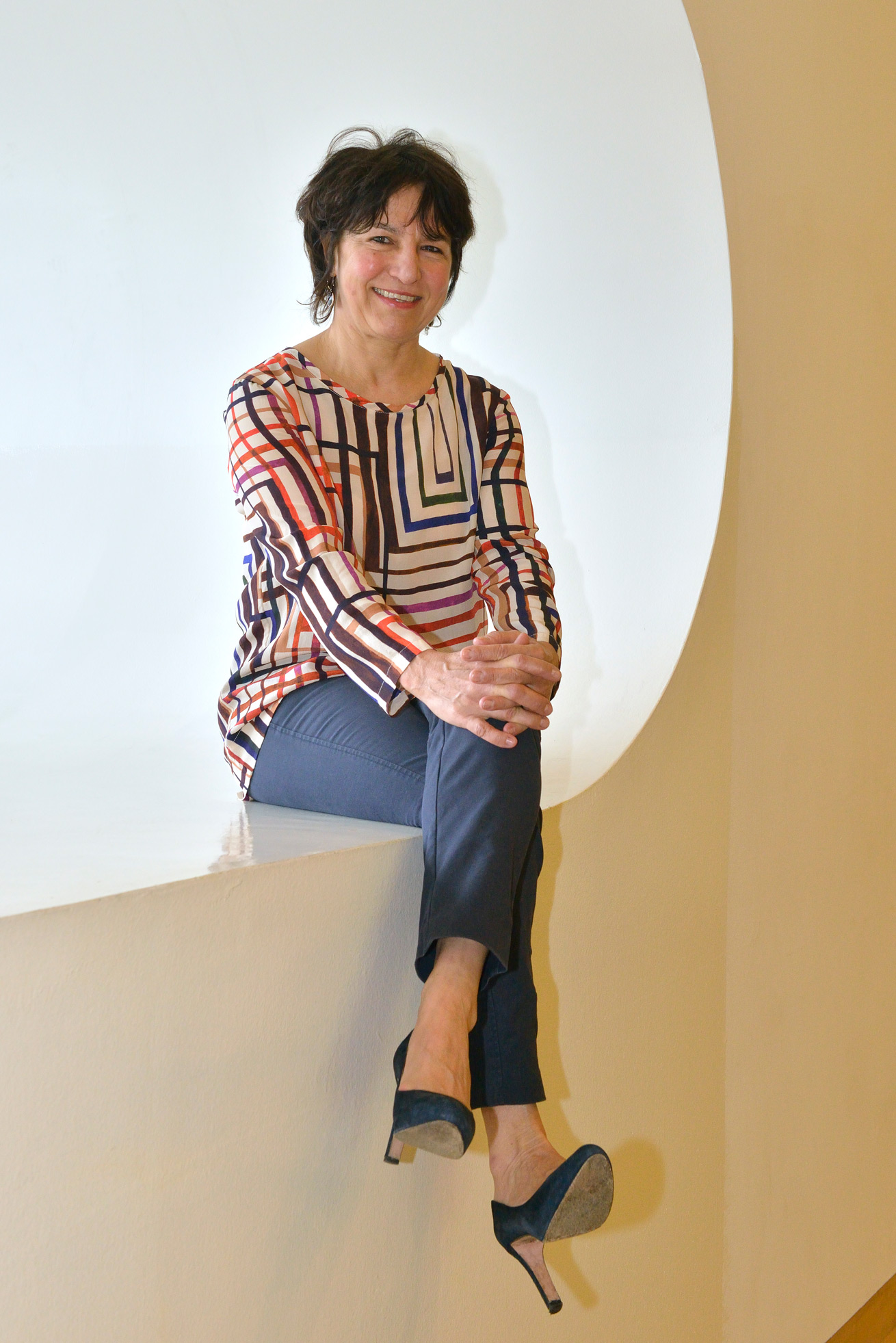
Madeleine van Lennep. Photo by Ilco Kemmere
DH • How did BNO strike you, two years ago?
Are there things that you would like to improve? What are your ambitions?
MvL • I found a professional and down-to-earth organisation, but one in need of some revitalisation. I formulated the ambitions in a brief policy plan at the end of 2013, under the title ‘Via BNO’, which you can still read on www.bno.nl. A professional association like BNO can continue to have a huge added value in the 21st century, provided it keeps eyes and ears wide open and remains in touch with the professional practice of designers. My goal is to see the potential of the design discipline more fully understood and utilised, whether in respect of pure functionality or of beauty. Actually, these two matters are a lot more closely related than one might think.
DH • The policy plan you just referred to talks about the challenges of our time, such as sustainability, health, ageing, social provisions and migration. I quote: “To tackle such issues requires technological innovation as well as behavioural and organisational change. Ideally, all parties work towards a creative economy in which material and immaterial values reinforce each other.” I notice that Dutch designers are increasingly collaborating with other sectors and that the design process is increasingly driven by research rather than by concepts or aesthetics. By tradition, a professional association serves to group together a discipline. Does this history hamper today’s trends?
MvL • Due to a number of mergers in the past, BNO unites and represents many and diverse design disciplines. This is appropriate to the described trends in the world and the profession. As long as we are clear about the how and why of our activities, this large differentiated entity is very important to all (potential) stakeholders. Consider for instance a seminar on packaging design, tied to innovation and sustainability, or workshops about smart products, where industrial designers link up with digital designers and inventors.
DH • As a consequence of funding cuts and mergers, the subsidised cultural infrastructure in the Netherlands has changed significantly. We no longer have separate sector institutes for architecture, digital media and design, and Het Nieuwe Instituut has formulated an agenda of its own. Does this represent an opportunity for BNO to develop activities in more areas?
MvL • It is counterproductive for public institutions to cling to a differentiation between sectors, while the sector boundaries are becoming increasingly porous and contestable. I believe in the benefits of a theme-based approach, with diverse disciplines and practices naturally emerging as you go along. Regarding Het Nieuwe Instituut and BNO: we operate in the same domain but have different roles and resources. As a self-supporting organisation, it is BNO’s responsibility to optimally assist the affiliated designers and agencies in their professional practice. BNO furthermore pursues issues that are important more generally and for the longer term; think for instance of raising public awareness of the discipline, adequate education programmes, helpful rules and regulations, a productive top sector policy, and so on. For many it may not seem so relevant, but it is essential nevertheless. Incidentally, as a result of the restructuring effort of the government, some important matters have fallen through the cracks such as design heritage, internationalisation and education. BNO is doing all it can, but it does feel that the national government has some omissions to make up for.
DH • Should designers themselves become more vocal in communicating their interests to the political establishment, alongside BNO?
MvL • I doubt whether many designers are eager to do so, I think they prefer to leave that to their professional association. Nevertheless, there are some role models who could play an important role in representing the sector. The Society of Arts, founded last year, will also seek to exert influence in that way. By the way, BNO has lobbied to have designers represented in that body, and successfully so: Irma Boom, Iris van Herpen, Jurgen Bey and Koert van Mensvoort will soon be joining the Society.
DH • Unlike in previous years, this year BNO has been more outspoken about how the Netherlands should present itself in Milan. Will we be seeing more of BNO at international fairs from now on?
MvL • In response to signals communicated by the Consulate and by seasoned Milan-goers, we wanted to see if we can’t get more out of the Salone del Mobile, making use of initiatives like Connecting the Dots which has generated an extensive network and a vast amount of knowledge in recent years. If designers prepare more thoroughly for the fair and in good time, and if you can connect all the individual efforts to create more visibility and impact, then everyone will benefit from that. That’s why we discussed with a number of parties whether it’s time for a ‘rebranding’ of the concept of Dutch Design, how we can improve the promotion of participating designers, agencies and businesses, and how we can contribute to a better follow-up. We are also examining the opportunities and possibilities with regard to other fairs.
DH • The Netherlands has been looking for a way to promote itself more effectively on the international stage since many years. People regularly cast a jealous glance at the Scandinavian countries, who manage to present a very robust identity. Why does the Netherlands have such trouble promoting its talents?
MvL • It is a pity that a programme like DutchDFA is not really followed up on. Still, a lot is possible and a lot gets done, too. But our memory is limited, we neglect the lessons learnt, and there is often no systematic and effective promotion. Many people are moreover inclined to promote themselves individually, through a kind of naiveté or from a bit of a spoiled position. Collective ideas and a collective approach are not necessarily at odds with that, but it does require some missionary work to create a whole that is more than the sum of its parts.
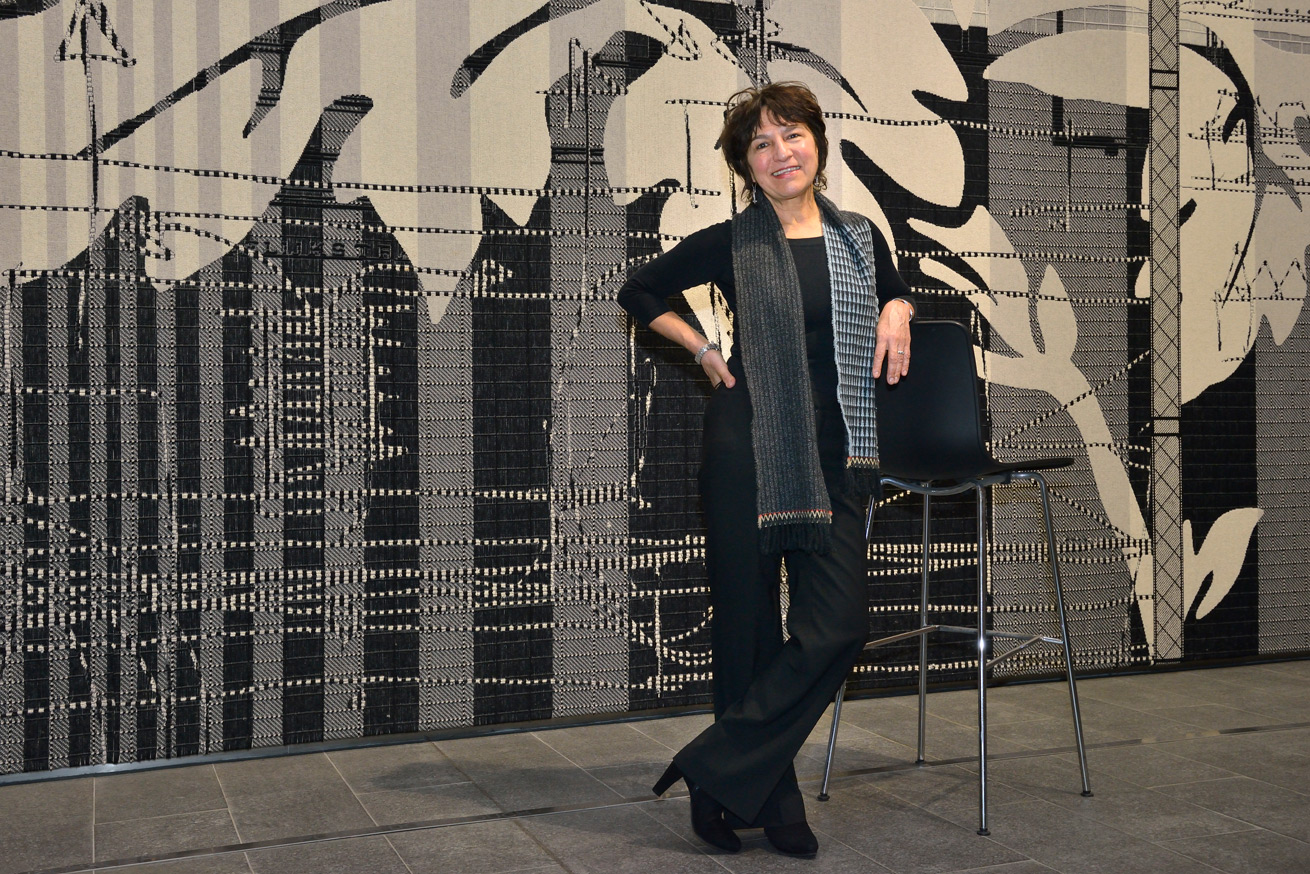
Madeleine van Lennep in front of Damask by Inside Outside, Petra Blaisse and Marieke van den Heuvel (2011- 2012). Commissioned by Stedelijk Museum Amsterdam. Dimensions: 200 m2. Material: wool (white, grey, black). Technique: 15 different bindings, machine-woven. Production and sponsor: Desso. Photo by Ilco Kemmere
DH • Your policy plan refers to the loyalty that exists between designers, which always strikes me as well. Doesn’t this make designers an eminently suitable group with which to create more synergy at a policy level?
MvL • There are limits to designers’ capacities, leaving aside the question of what they prefer to spend their time and energy on. Although there are good exceptions: BNO has a board with very dedicated designers. Many designers are active within our regional platforms, former boardmembers like Jeroen Verbrugge and Tom Dorresteijn play an important role advocating the effectiveness of design. And Jeroen van Erp is putting in an tremendous effort as chairman of the Creative Council to boost the internationalisation of the sector. But the various parties involved all play according to complex rules, so it requires a great deal of persistence.
DH • We are in the midst of a crisis and many designers, brands, fairs and trade media are struggling. What, in your opinion, does the sector need in order to stay afloat?
MvL • An acute social awareness, and a more deliberate focus on professionalism and promotion. Opportunities can be found in extreme specialisation as well as in crossovers within and beyond the sector, and in internationalisation. I furthermore advise all designers to regularly attend training courses, as this helps you keep your eye on the ball. BNO currently offers an attractively priced range of courses, and not just for starters but also for office staff and for people looking for new stimuli.
DH • How would you describe the landscape of the Dutch design sector? Who are the main players and what qualities do you see, with respect to entrepreneurship and design styles?
MvL • A few points: we have excellent digital designers. Dutch designers still stand out for their unique and inventive approach. And they are good at crossover-thinking, as we demonstrate systematically in the Crossover Works series which is available in English and now also in German, both online and offline. Entrepreneurship is indispensable, but does not come naturally to everyone. Also on that account: the future demands teamwork. The world is changing profoundly, and those in the design discipline who can best respond to or even anticipate the trends, are sitting on a gold mine.
DH • Do you think the world around shares this view of the Dutch design identity?
MvL • I said with good reason that the concept of Dutch Design requires rebranding. We cannot continue to lean on our image from the previous century, and we shouldn’t want to, either. This is a very different era, with new challenges and new opportunities. The Dutch education programmes still enjoy a strong reputation, but it’s a good thing that they are working hard at renewing themselves. Urgency is the key word, I think, in each and every design discipline.
DH • A few years ago we interviewed Deyan Sudjic, and one of the things he said was: “What has come to be called Dutch design is better called design in the Netherlands, which is the product of some well publicised educational experiments, and the residual afterglow of a state that once felt obligated to reflect certain cultural values, for example through the design of the PTT and the pre-Euro banknotes.” Did he have a point there?
MvL • Certainly. Presumably, he was referring both to the vision and efforts of Droog and to the designs that came about as a result of the government acting as launching customer. But the world of design has always been broader than what he focused on here. BNO portrays the full scope of the design domain through Dude, which we have deliberately christened the Dutch Designers Magazine, with a bit of tongue-in-cheek but also out of self-interest.
DH • You will be visiting the Milan fair this year for the first time – how do you feel about that? How are you going to tackle your trip? Will we be seeing you in Bar Basso until the wee hours of the morning?
MvL • Indeed, I could never get around to it before – I’m familiar with Milan but not yet with the Salone del Mobile. I’ve got three days there and I aim to make the most of it. I will gratefully use the advice of regular attendees: first of all the designers of course, but also my colleague Anouk Siegelaar, Margo Curto of the Consulate, some people from Het Nieuwe Instituut and from the Creative Industries Fund. And your advice too, of course! Let’s anyway meet up in Bar Basso to discuss our adventures of the day.
This article was previously published in The Dots magazine #11 – Milan 2015. Read entire magazine here.

